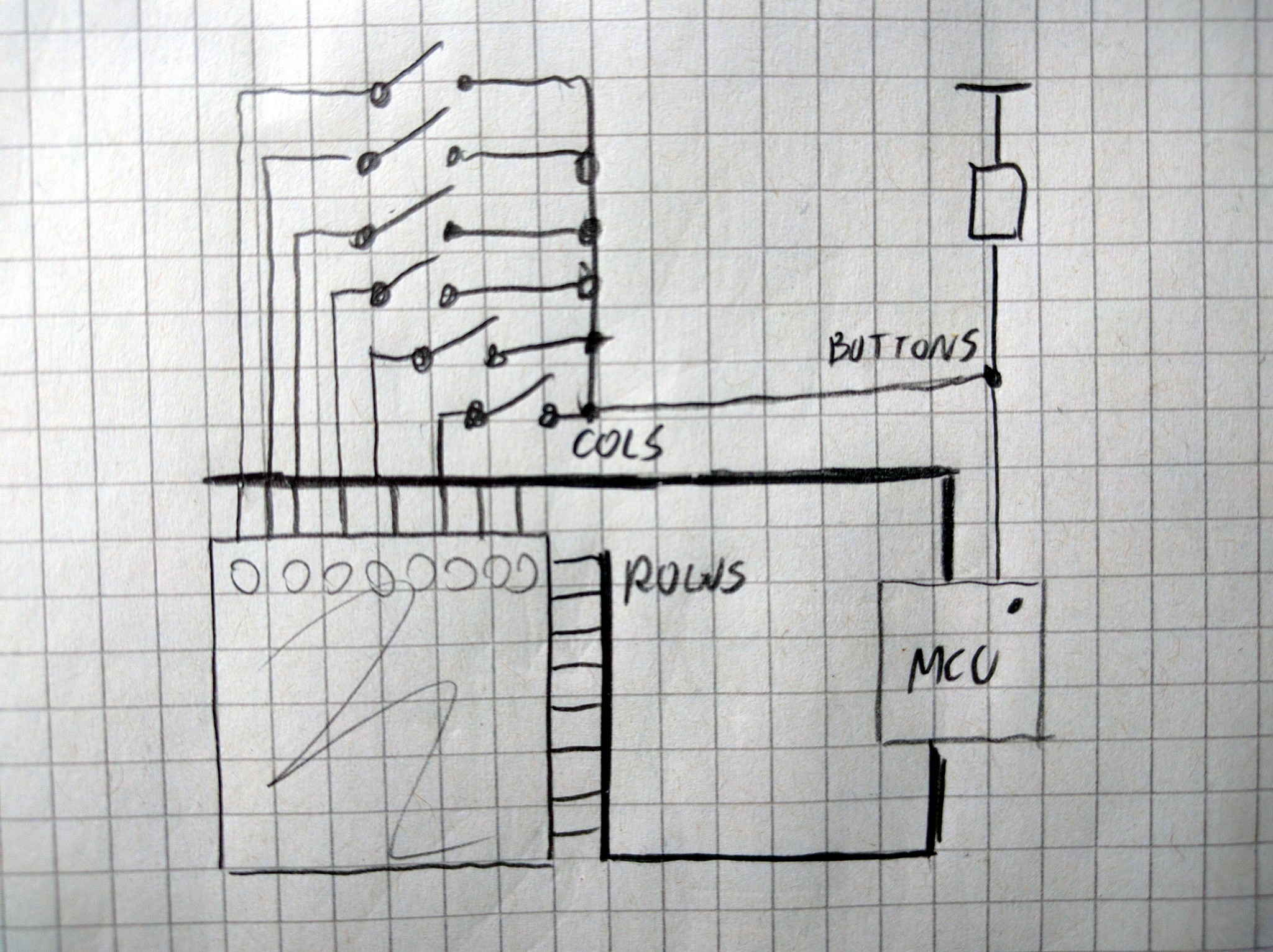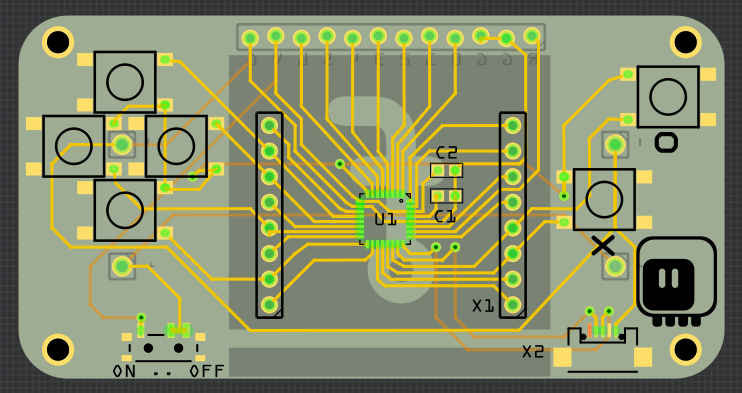Saving Pins¶
Published on 2018-08-14 in PewPew Standalone.
As the prototypes are coming, this device is becoming a pretty nice thing for teaching game programming, which is its main focus. However, wouldn’t it be great if it could also be used for hobby electronics projects, like the micro:bit or any number of development boards? For that it would need to break out more pins than the SWD and SWC it breaks out right now, and they would need to be broken out in a way that makes it easy to connect stuff to them.
The current pin budget is as follows:
8 pins for the LED matrix rows
8 pins for the LED matrix columns
6 pins for the buttons
2 pins for programming/debugging/connecting stuff
2 pins for USB
One way to free some pins would be to drop the LED matrix and use charlieplexed LEDs like in the business card prototype — then I can get away with 9 pins instead of 16, and would have 7 free pins, which is enough for this kind of use in my opinion. However, while the parts cost is similar, the assembly costs might go up, and the display is much less readable, due to lack of diffusing. I could add a 3D-printed diffuser on top, but that again adds to the cost.
Is there any way I could save pins on the buttons? Right now I use one pin per button, which is kinda wasteful. I could arrange them in a 2×3 matrix, which would require 5 pins, saving me one, but I don’t think it’s worth it, especially since I would then need additional diodes to avoid ghosting. I could use a resistor ladder and connect all the buttons to an analog pin — but then reading the button state would take longer, as ADC is not as fast as simple digital pins. Can I share the LED matrix pins with the buttons? If I just connected them to the row pins via diodes, I could have an additional fake column for which I would scan the buttons, but that’s 6 extra diodes. Hmm, what if the other end of the buttons wasn’t connected to GND or VCC, but instead to an additional pin? I already scan the columns, so I could connect the buttons to that, and on every column check the additional pin (with a pullup) for the value of the corresponding button. As a bonus, no extra components and no extra cycles in the matrix scanning, so the brightness shouldn’t suffer. That seems like the way to go!

And that gives me 5 free pins, which together with the 2 debugging pins give me a nice 7 pin header. That should be enough for most basic hobby electronic uses, especially since I can choose pretty much any pins for that, so I can take all the ones that have interesting peripherals on them: ADC, DAC, serial, I2C, SPI, timers.\
Now, onto the connector.
I can’t just use normal male headers, even though that would make it super-easy to connect the device to a breadboard, because it’s supposed to be carried in a pocket, and the pins could lead to injuries, torn clothes and, what’s worse, bent pins. I don’t want to use an edge connector, like the microbit, because it forces you to buy special hardware and defeats the whole idea of a cheap device. I don’t like the big holes for banana plugs/crocodile clips, because who uses banana plugs today? Also they are huge and wasteful. I could use a female pin header — then you could easily use dupont cables to connect it to anything you need. It would even look good next to the matrix display. Or I could just leave the holes for the header unpopulated (which saves me part and some soldering), and use staggered holes, so that you can insert a male pin header when you need it, or solder a female header if you want. I think I will go with that.
The last question is where should the header be located? Obviously we don’t want to have it on the same side as the USB plug and power switch. In fact, if this is going to be connected to a breadboard, we don’t want an USB plug anymore, and we will need to switch back to a micro USB socket, so that you can have some distance between your computer and the breadboard. But still we don’t want them on the same side.
When we put all this together, we get something roughly like this:

I have ordered enough PCBs this month already, so I will keep thinking about this and maybe adding small improvements.
 deshipu.art
deshipu.art